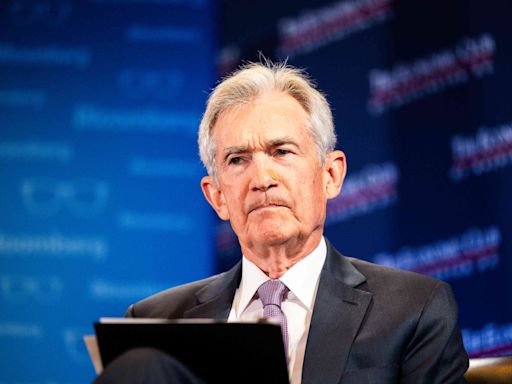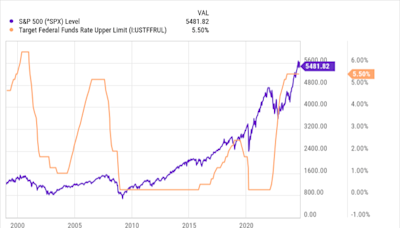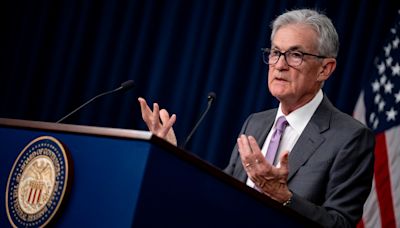Search results
The Federal Reserve's History. The Federal Reserve System (“Fed”) is the central bank of the United States. This website serves as a gateway to the history of the Federal Reserve for educators, students, and the general public.
- Federal Reserve History
Fed History Overview. The Federal Reserve System is the...
- Federal Reserve People
Federal Reserve People - Home | Federal Reserve History
- About the Fed
About the Fed - Home | Federal Reserve History
- Learning Fed History
Explore the Federal Reserve's history. Teaching and Learning...
- Great Recession and After (2007–)
Explore the Federal Reserve's history. The 2007-09 economic...
- Great Moderation (1982–2007)
The Federal Reserve's Response to the September 11 Terrorist...
- Great Inflation (1965–1982)
Great Inflation (1965–1982) - Home | Federal Reserve History
- After the Accord (1951–1965)
After the Accord (1951–1965) - Home | Federal Reserve...
- WWII and After (1941–1951)
WWII and After (1941–1951) - Home | Federal Reserve History
- Great Depression (1929–1941)
Great Depression (1929–1941) - Home | Federal Reserve...
- Federal Reserve History
The Federal Reserve System is the third central banking system in United States history. The First Bank of the United States (1791–1811) and the Second Bank of the United States (1817–1836) each had a 20-year charter.
- How It All Began
- Before The Fed
- The Early Years
- The Great Depression
- World War II and Beyond
- After The Treasury-Fed Accord
- The Great Inflation
- The Great Moderation
- The Great Financial Crisis, Recession, and Aftermath
- The Covid-19 Crisis and The Fed
Founded by an act of Congress in 1913, the Federal Reserve System was established with several goals in mind. Perhaps most important was to make the American banking system more stable. Banking panics—events characterized by widespread bank runs and payments suspensions and, to a degree, outright bank failures—had occurred often throughout the 19th...
Although the problems with the U.S. banking system were widely recognized and studied throughout the 19th century, reforming the system was difficult because of competing interests and goals. The first of eight period essays on this website, “Before the Fed: The Historical Precedents of the Federal Reserve System,” delves into the evolution of the ...
The Federal Reserve Act attempted to deal with the “inelastic currency” problem by creating an entirely new currency—the Federal Reserve note—and a mechanism to get those notes quickly into circulation. The Act established a system of Reserve Banks with capital provided by the member commercial banks in their designated territories. National banks ...
The bottom dropped out of the U.S. economy in the 1930s. Economic activity peaked in the summer of 1929 and began to fall precipitously after the stock market crashed in October. Total output of goods and services (GDP) fell by some 30 percent, prices fell sharply, and the unemployment rate soared to 25 percent by 1933. As the essay “The Great Depr...
The U.S. economy was still recovering from the Great Depression when the United States entered World War II in December 1941. Interest rates were already at low levels when the Fed agreed to prevent them from rising during the war. As the essay “From WWII to the Treasury-Fed Accord” explains, the Fed kept the yield on long-term U.S. government bond...
The Accord enabled the Fed to use monetary policy to achieve macroeconomic goals. As the essay “From the Treasury-Fed Accord to the Mid-1960s” explains, the Fed pulled back from broad support of the Treasury market and usually conducted its open-market operations in short-term Treasury bills. However, the Fed continued to assist the Treasury by agr...
After an extended period of low and relatively stable inflation from the early 1950s through the mid-1960s, U.S. inflation began to rise and was unusually high and volatile from the late-1960s through the 1970s. As the essay, “The Great Inflation,” explains, by the 1960s many economists and policymakers had come to believe in the existence of a rel...
The Great Inflation was followed by a period of about 20 years commonly referred to as the Great Moderation. Compared with the Great Inflation era, inflation was low and stable, and fluctuations in economic activity were modest. The essay, “The Great Moderation,” explores possible reasons why the performance of the economy was so good during this p...
The Great Moderation ended, or perhaps was interrupted, when a major financial crisis triggered a serious recession. The essay, “The Great Recession and Its Aftermath,” explains that the financial crisis of 2007-08 began when firms and investors started to experience losses on home mortgage-related financial assets. As the crisis spread, several la...
The Federal Reserve and the nation were confronted with another crisis in 2020 by the COVID-19 pandemic. Financial market turmoil erupted in early March when the pandemic began to spread across the United States. The Fed acted swiftly. The FOMC reduced its federal funds rate target effectively to zero and began to purchase substantial quantities of...
Before the founding of the Federal Reserve System, the United States underwent several financial crises. A particularly severe crisis in 1907 led Congress to enact the Federal Reserve Act in 1913. Today the Federal Reserve System has responsibilities in addition to stabilizing the financial system.
About the Fed. Federal Reserve History. The Federal Reserve System was created on December 23, 1913, when President Woodrow Wilson signed the Federal Reserve Act into law. The system is composed of a central, independent governmental agency--the Board of Governors--in Washington, D.C., and 12 regional Federal Reserve Banks, located in major ...
Fed History Overview. The Federal Reserve System is the central bank of the United States. Founded by an act of Congress in 1913, the Federal Reserve’s primary purpose was to enhance the stability of the American banking system. Time Period: The Great Recession and After.
2 days ago · Federal Reserve System, central banking authority of the United States. It acts as a fiscal agent for the U.S. government, is custodian of the reserve accounts of commercial banks, makes loans to commercial banks, and oversees the supply of currency, including coin, in coordination with the U.S. Mint.






